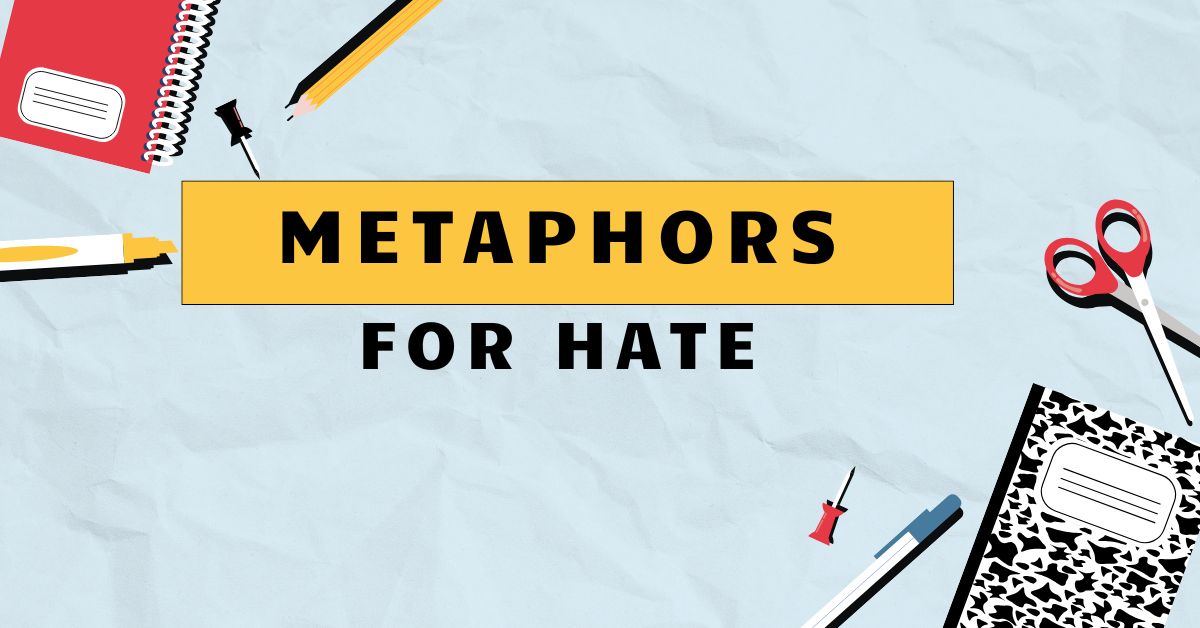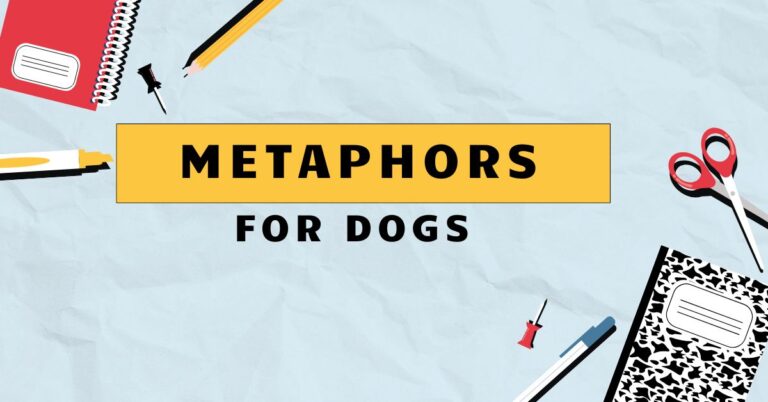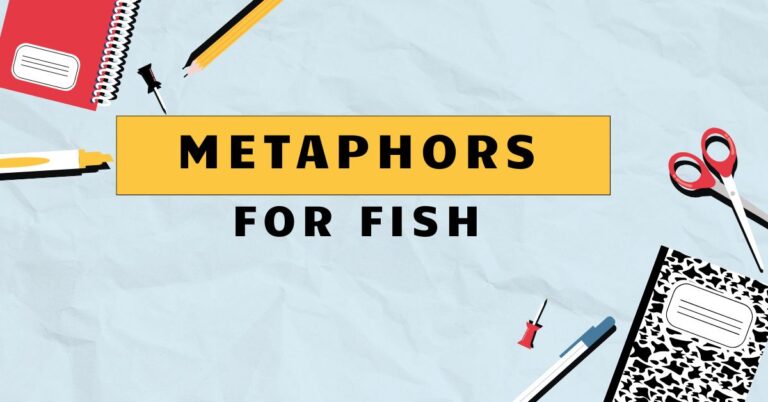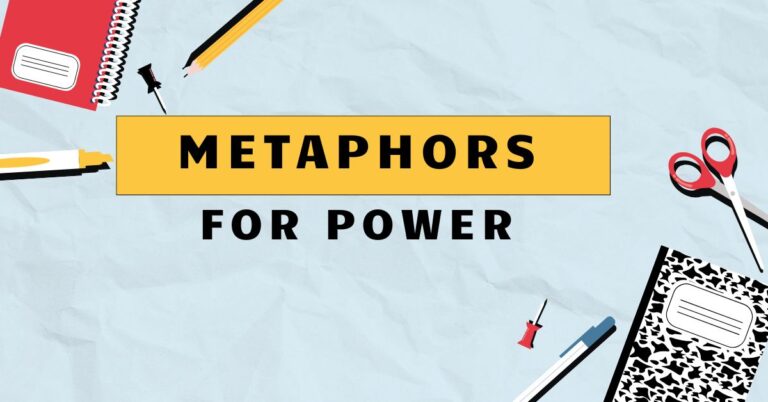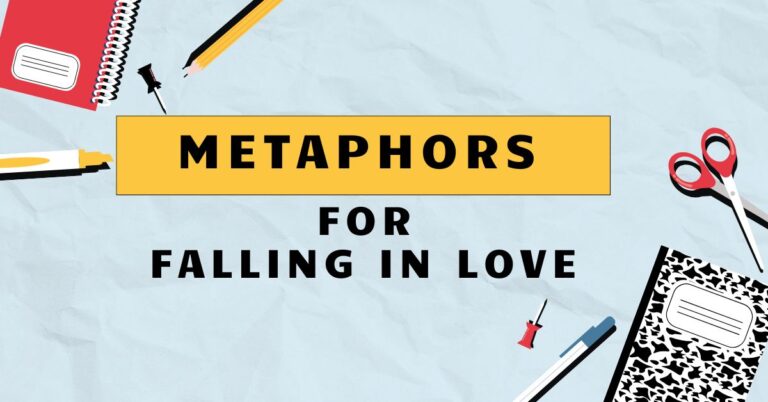36 Metaphors for Hate: Understanding Figurative Language
Understanding metaphors for hate is crucial for interpreting literature, media, and everyday conversations. These metaphors, often subtle, can reveal underlying biases and harmful ideologies.
This article provides a comprehensive guide to identifying, analyzing, and understanding metaphors used to express hate. Students, educators, linguists, and anyone interested in critical discourse analysis will benefit from this exploration of how language shapes perceptions and perpetuates prejudice.
Table of Contents
- Definition of Metaphors for Hate
- Structural Breakdown
- Types and Categories of Metaphors for Hate
- Examples of Metaphors for Hate
- Usage Rules
- Common Mistakes
- Practice Exercises
- Advanced Topics
- FAQ
- Conclusion
Definition of Metaphors for Hate
A metaphor for hate is a figure of speech that uses an implicit comparison to express negative feelings, prejudice, or animosity towards a person or group. Unlike similes, which use “like” or “as” to make a comparison, metaphors directly equate the target of hate with something undesirable.
These metaphors often rely on negative stereotypes and can contribute to the dehumanization and marginalization of targeted groups. Understanding these metaphors is essential for recognizing and combating hate speech.
They function by transferring qualities from one concept (the source domain) to another (the target domain), creating a powerful and often insidious association.
Metaphors for hate are not merely descriptive; they areperformative. This means they actively shape our understanding and perception of the targeted group.
By associating a group with something inherently negative, such as disease or vermin, these metaphors can justify discrimination, violence, and other forms of oppression. Therefore, critically analyzing these metaphors is crucial for promoting social justice and equality.
The power of these metaphors lies in their ability to evoke strong emotional responses and bypass rational thought.
Structural Breakdown
The structure of a metaphor for hate typically involves two key elements: thetargetand thesource. The target is the person or group being subjected to hate.
The source is the concept or image used to express that hate. The metaphor works by mapping attributes from the source onto the target.
This mapping process creates a new understanding of the target, often one that is negative and dehumanizing.
For example, in the phrase “They are a plague on society,” the target is the group being referred to, and the source is “plague.” The metaphor maps attributes of a plague, such as its destructiveness and contagiousness, onto the targeted group. This implies that the group is harmful and needs to be eradicated.
Understanding this structure allows us to deconstruct the underlying message of the metaphor and challenge its validity. The effectiveness of a metaphor often depends on the cultural context and shared understandings of the source domain.
Another important aspect of the structural breakdown is theimplicitnessof the comparison. Metaphors for hate rarely state the comparison directly.
Instead, they rely on the listener or reader to make the connection between the target and the source. This implicitness can make these metaphors more insidious, as they operate on a subconscious level.
By understanding the structural components of these metaphors, we can become more aware of their impact and resist their influence. The subtle nature of these metaphors often makes them difficult to detect, especially for those unfamiliar with the specific cultural or historical context.
Types and Categories of Metaphors for Hate
Metaphors for hate manifest in various forms, each with its own distinct characteristics and implications. Categorizing these metaphors helps in identifying and understanding them more effectively.
Animalistic Metaphors
Animalistic metaphors compare people to animals, often with the intent to degrade or dehumanize. These metaphors frequently associate the targeted group with animals considered undesirable or threatening.
This can evoke feelings of disgust, fear, or contempt.
Disease Metaphors
Disease metaphors portray the targeted group as a disease or infection that threatens the health and well-being of society. This metaphor often implies that the group needs to be isolated, quarantined, or even eradicated to prevent further spread.
Such metaphors are particularly dangerous as they can justify extreme measures.
Objectification Metaphors
Objectification metaphors reduce individuals to mere objects, stripping them of their humanity and agency. This type of metaphor often focuses on physical attributes, turning people into commodities or tools.
This can lead to the devaluation and exploitation of the targeted group, particularly women.
Dehumanization Metaphors
Dehumanization metaphors deny the targeted group their basic human qualities, portraying them as less than human. This can involve comparing them to animals, objects, or abstract concepts.
Dehumanization is a common precursor to violence and genocide, as it makes it easier to justify harming or killing the targeted group.
Pollution Metaphors
Pollution metaphors associate the targeted group with dirt, filth, or contamination. This metaphor implies that the group is impure and threatens the purity of the dominant group or society.
This can lead to social exclusion and discrimination.
Vermin/Infestation Metaphors
Vermin or infestation metaphors compare the target group to pests that need to be exterminated. This is one of the most dangerous types of hate speech, as it explicitly calls for violence and eradication.
Such metaphors are often used in propaganda to incite hatred and justify genocide.
Natural Disaster Metaphors
Natural disaster metaphors portray the targeted group as a destructive force of nature, such as a flood, earthquake, or hurricane. This metaphor implies that the group is uncontrollable and poses an existential threat.
This can lead to fear and panic, justifying extreme measures to contain or eliminate the perceived threat.
Examples of Metaphors for Hate
The following tables provide various examples of metaphors for hate, categorized by type. Each example illustrates how the metaphor functions to express prejudice and animosity.
The table below showcases examples of animalistic metaphors used to express hate. These metaphors often draw on negative stereotypes associated with specific animals to denigrate the targeted group.
| Category | Metaphor | Explanation |
|---|---|---|
| Animalistic | “They are snakes in the grass.” | Implies the group is deceitful and treacherous. |
| Animalistic | “They are vultures preying on the weak.” | Suggests the group is exploitative and opportunistic. |
| Animalistic | “They are a pack of wolves.” | Conveys the idea that the group is savage and dangerous. |
| Animalistic | “They are rats infesting our city.” | Associates the group with disease, dirt, and undesirability. |
| Animalistic | “They are pigs wallowing in filth.” | Suggests the group is morally corrupt and disgusting. |
| Animalistic | “They are rabid dogs.” | Implies the group is uncontrollably violent and dangerous. |
| Animalistic | “They are leeches sucking the life out of our economy.” | Portrays the group as parasites draining resources. |
| Animalistic | “They are like sheep, easily led astray.” | Suggests the group lacks critical thinking and is easily manipulated. |
| Animalistic | “They are foxes in the henhouse.” | Conveys the idea of cunning, deceit, and malicious intent within a vulnerable environment. |
| Animalistic | “They are hawks circling overhead.” | Implies a predatory nature, always seeking opportunities to exploit or attack. |
| Animalistic | “They are mules, stubborn and unyielding.” | Suggests the group is unwilling to cooperate or change their ways, often used in a derogatory manner. |
| Animalistic | “They are chameleons, constantly changing to fit in.” | Portrays the group as untrustworthy and lacking genuine identity, adapting to manipulate situations. |
| Animalistic | “They are owls, lurking in the shadows.” | Conveys a sense of mystery and potential danger, suggesting hidden motives and secretive activities. |
| Animalistic | “They are peacocks, flaunting their wealth and status.” | Implies vanity and superficiality, often used to criticize perceived arrogance or materialism. |
| Animalistic | “They are beavers, tirelessly working to undermine our foundations.” | Suggests a persistent and destructive effort to dismantle existing structures or systems. |
| Animalistic | “They are spiders, weaving webs of deceit.” | Portrays the group as manipulative and trapping others in their schemes. |
| Animalistic | “They are termites, slowly eating away at our society.” | Conveys the idea of a gradual and insidious destruction of societal values or institutions. |
| Animalistic | “They are cockroaches, surviving in the darkest corners.” | Associates the group with resilience but also with filth, disease, and undesirability. |
| Animalistic | “They are hyenas, scavenging for scraps.” | Implies a lack of self-sufficiency and a willingness to take advantage of others’ misfortunes. |
| Animalistic | “They are like parrots, merely repeating what they hear.” | Suggests a lack of originality and independent thought, often used to dismiss opposing viewpoints. |
The following table presents examples of disease metaphors used to express hate. These metaphors often evoke fear and disgust, portraying the targeted group as a threat to societal health.
| Category | Metaphor | Explanation |
|---|---|---|
| Disease | “They are a cancer on society.” | Implies the group is destructive and needs to be removed. |
| Disease | “Their ideas are a virus spreading through our youth.” | Suggests the group’s beliefs are contagious and harmful. |
| Disease | “They are a plague infecting our nation.” | Conveys the idea that the group is a widespread and deadly threat. |
| Disease | “They are a festering wound on our community.” | Associates the group with pain, suffering, and decay. |
| Disease | “They are a malignant growth.” | Implies the group is dangerous and unstoppable. |
| Disease | “Their influence is a toxin poisoning our culture.” | Suggests that the group’s presence is detrimental to the well-being of society. |
| Disease | “They are a symptom of a deeper societal illness.” | Implies that the group’s existence is a manifestation of underlying problems. |
| Disease | “They are a contagious outbreak.” | Conveys the idea that the group’s presence is rapidly spreading and harmful. |
| Disease | “Their actions are like a spreading rash.” | Suggests that the group’s behavior is irritating and disruptive. |
| Disease | “They are a parasite feeding off our resources.” | Implies that the group is draining the resources of society. |
| Disease | “Their presence is like a chronic disease.” | Suggests that the group’s existence is a persistent and debilitating problem. |
| Disease | “They are a blight on our landscape.” | Implies that the group is marring the beauty and purity of society. |
| Disease | “Their ideas are like a mental infection.” | Suggests that the group’s beliefs are harmful to the minds of individuals. |
| Disease | “They are a societal tumor.” | Implies that the group is growing uncontrollably and causing harm. |
| Disease | “Their presence is like a social sickness.” | Suggests that the group is causing disharmony and disruption in society. |
| Disease | “They are a plague on progress.” | Implies that the group is hindering the advancement of society. |
| Disease | “Their influence is like a silent killer.” | Suggests that the group’s impact is subtle but deadly. |
| Disease | “They are a boil on the skin of society.” | Implies that the group is an unsightly and irritating problem. |
| Disease | “Their presence is like a systemic failure.” | Suggests that the group’s existence is a sign of deeper flaws in the system. |
| Disease | “They are a social contagion.” | Conveys the idea that the group’s behavior is easily spread and harmful. |
The subsequent table illustrates objectification metaphors, which reduce individuals to objects, stripping them of their humanity and agency.
| Category | Metaphor | Explanation |
|---|---|---|
| Objectification | “They are just cogs in the machine.” | Implies the group is insignificant and easily replaceable. |
| Objectification | “They are mere puppets dancing to someone else’s tune.” | Suggests the group lacks autonomy and is controlled by others. |
| Objectification | “They are disposable commodities.” | Conveys the idea that the group is valued only for their utility. |
| Objectification | “They are just tools to be used and discarded.” | Associates the group with a lack of inherent worth. |
| Objectification | “They are broken toys.” | Implies the group is useless and damaged. |
| Objectification | “They are just numbers on a spreadsheet.” | Suggests that the group is reduced to statistics and lacks individual identity. |
| Objectification | “They are like bricks in a wall.” | Implies that the group is uniform and lacks individuality. |
| Objectification | “They are just pieces of furniture.” | Conveys the idea that the group is inanimate and unimportant. |
| Objectification | “They are like mannequins in a store window.” | Suggests that the group is artificial and lacks substance. |
| Objectification | “They are just pawns in a game.” | Implies that the group is manipulated and exploited for someone else’s gain. |
| Objectification | “They are like robots, following orders blindly.” | Suggests that the group lacks critical thinking and independent action. |
| Objectification | “They are just labels on a product.” | Implies that the group is defined solely by superficial characteristics. |
| Objectification | “They are like statues, cold and unfeeling.” | Suggests that the group lacks empathy and emotional depth. |
| Objectification | “They are just objects of desire.” | Implies that the group is valued only for their physical appearance. |
| Objectification | “They are like instruments to be played.” | Suggests that the group is used and manipulated for someone else’s pleasure. |
| Objectification | “They are just building blocks for our society.” | Implies that the group is valued only for their contribution to a larger structure. |
| Objectification | “They are like commodities to be traded.” | Suggests that the group is treated as a resource to be bought and sold. |
| Objectification | “They are just tools in our toolbox.” | Implies that the group is used only for specific tasks and then discarded. |
| Objectification | “They are like pieces of art to be admired.” | Suggests that the group is valued only for their aesthetic appeal. |
| Objectification | “They are just inventory in our warehouse.” | Implies that the group is stored and used as needed, lacking individual recognition. |
This table provides examples of dehumanization metaphors, which deny the targeted group their basic human qualities, portraying them as less than human.
| Category | Metaphor | Explanation |
|---|---|---|
| Dehumanization | “They are not like us.” | Implies the group is fundamentally different and inferior. |
| Dehumanization | “They are soulless creatures.” | Suggests the group lacks empathy, morality, and humanity. |
| Dehumanization | “They are like machines, devoid of emotion.” | Conveys the idea that the group is unfeeling and mechanical. |
| Dehumanization | “They are less than human.” | Explicitly denies the group their humanity. |
| Dehumanization | “They are just bodies.” | Reduces the group to their physical form, denying their mental and emotional capacity. |
| Dehumanization | “They are like shadows, without substance.” | Suggests that the group lacks real presence and importance. |
| Dehumanization | “They are just echoes, repeating what they are told.” | Implies that the group lacks original thought and independent will. |
| Dehumanization | “They are like empty vessels.” | Conveys the idea that the group lacks inner depth and meaning. |
| Dehumanization | “They are just faces in the crowd.” | Suggests that the group is anonymous and indistinguishable. |
| Dehumanization | “They are like ghosts, haunting our society.” | Implies that the group is a lingering and unwelcome presence. |
| Dehumanization | “They are just numbers in a system.” | Suggests that the group is reduced to statistics and lacks individual significance. |
| Dehumanization | “They are like automatons, following programmed instructions.” | Implies that the group lacks free will and acts without conscious thought. |
| Dehumanization | “They are just biological entities.” | Reduces the group to their biological functions, denying their cultural and social identity. |
| Dehumanization | “They are like blank slates.” | Suggests that the group lacks inherent qualities and is easily manipulated. |
| Dehumanization | “They are just genetic material.” | Reduces the group to their genetic makeup, denying their individual experiences and achievements. |
| Dehumanization | “They are like puppets on a string.” | Implies that the group is controlled by external forces and lacks autonomy. |
| Dehumanization | “They are just organisms.” | Reduces the group to their basic biological existence, denying their higher-level cognitive abilities. |
| Dehumanization | “They are like shadows of their former selves.” | Suggests that the group has lost their original identity and purpose. |
| Dehumanization | “They are just carriers of disease.” | Reduces the group to their potential to spread illness, denying their individual health and well-being. |
| Dehumanization | “They are like walking dead.” | Implies that the group lacks vitality and purpose, existing only in a diminished state. |
Usage Rules
While metaphors can be powerful tools for communication, it’s crucial to use them responsibly, especially when discussing sensitive topics like hate. The primary rule is toavoid using metaphors that dehumanize, objectify, or demonize any group of people.
Such metaphors can perpetuate prejudice and incite violence.
Another important rule is to beaware of the historical and cultural contextof the metaphor. Some metaphors may have different meanings or connotations depending on the context.
Using a metaphor inappropriately can cause offense or misunderstanding. For example, a metaphor that references a specific historical event could be deeply offensive to those who were affected by that event.
Furthermore, it’s essential toconsider the impactof your words on your audience. Even if you don’t intend to cause harm, your metaphors can have unintended consequences.
Be mindful of the potential for your words to be misinterpreted or used to justify discrimination. If you’re unsure about the appropriateness of a metaphor, it’s best to err on the side of caution and choose a different way to express your ideas.
Usinginclusive and respectful languageis always the best approach.
Finally, be cautious ofoverusing metaphors. While metaphors can add color and depth to your writing, too many metaphors can make your message confusing or overwhelming.
Use metaphors sparingly and strategically, focusing on those that are most effective in conveying your intended meaning. Clarity and precision are essential, especially when discussing sensitive topics.
Always strive to communicate your ideas in a way that is both clear and respectful.
Common Mistakes
One common mistake is using metaphors for hateunintentionally. This often happens when people are unaware of the negative connotations or historical context of certain metaphors.
For example, using the term “gypped” to describe being cheated is considered offensive to the Romani people, as it perpetuates negative stereotypes. It is essential to be aware of the etymology and cultural implications of the words you use.
Another common mistake ismisinterpretingmetaphors for hate. Sometimes, people may not recognize that a particular phrase is a metaphor, or they may misinterpret its intended meaning.
This can lead to misunderstandings and missed opportunities to challenge hate speech. Critical thinking and careful analysis are essential for accurately interpreting metaphors.
A further mistake isignoring the impactof metaphors for hate. Even if a metaphor seems harmless on the surface, it can have a significant impact on the targeted group.
These metaphors can contribute to a climate of fear, discrimination, and violence. It is important to take all forms of hate speech seriously, regardless of how subtle or indirect they may seem.
Here’s a table showing some examples of common mistakes:
| Incorrect | Correct | Explanation |
|---|---|---|
| “They are a swarm of locusts.” | “Their actions are destructive.” | The original metaphor dehumanizes the group by comparing them to pests. |
| “They are a virus.” | “Their ideas are harmful.” | The original metaphor equates the group with a disease. |
| “They are like animals.” | “Their behavior is uncivilized.” | The original metaphor is a broad dehumanizing statement. |
| “They are polluting our culture.” | “Their influence is changing our culture in ways I dislike.” | The original metaphor implies impurity and contamination. |
| “They are rats in the system.” | “They are exploiting the system for personal gain.” | The original metaphor dehumanizes and associates the group with vermin. |
| “They are a cancer, and we need to cut them out.” | “Their actions are divisive, and we need to address them constructively.” | The original metaphor evokes violence and eradication. |
| “They are just puppets on a string.” | “They are being manipulated by others.” | The original metaphor objectifies the group and denies their agency. |
| “They are a stain on society.” | “Their actions are damaging to our community.” | The original metaphor implies impurity and undesirability. |
| “They are like a wildfire spreading out of control.” | “Their movement is rapidly gaining momentum.” | The original metaphor suggests an uncontrollable and destructive force. |
| “They are just cogs in the machine, easily replaced.” | “They are valuable members of the team.” | The original metaphor devalues the group and implies they are expendable. |
Practice Exercises
Test your understanding of metaphors for hate with the following exercises. Identify the metaphors and explain their intended meaning and potential impact.
Exercise 1: Identify the Metaphor
Read each sentence and identify the metaphor used. Explain what is being compared and the potential impact of the metaphor.
| Question | Answer |
|---|---|
| 1. “They are a swarm of bees attacking our democracy.” | Metaphor: “swarm of bees.” Comparison: The group is being compared to a swarm of bees, implying they are numerous, aggressive, and threatening. Impact: Dehumanizes the group and evokes fear. |
| 2. “Their ideas are a poisonous snake slithering into our minds.” | Metaphor: “poisonous snake.” Comparison: The group’s ideas are being compared to a poisonous snake, implying they are dangerous, insidious, and harmful. Impact: Creates fear and distrust of the group’s ideas. |
| 3. “They are just weeds choking the life out of our garden.” | Metaphor: “weeds.” Comparison: The group is being compared to weeds, implying they are unwanted, invasive, and destructive. Impact: Justifies the removal or suppression of the group. |
| 4. “They are a cancer that needs to be cut out.” | Metaphor: “cancer.” Comparison: The group is being compared to cancer, implying they are deadly, destructive, and must be eradicated. Impact: Incites violence and justifies extreme measures. |
| 5. “They are like parasites feeding off our society’s resources.” | Metaphor: “parasites.” Comparison: The group is being compared to parasites, implying they are draining resources and contributing nothing in return. Impact: Creates resentment and justifies discrimination. |
| 6. “They are just puppets dancing on strings.” | Metaphor: “puppets.” Comparison: The group is being compared to puppets, implying they lack agency and are controlled by others. Impact: Dehumanizes the group and denies their autonomy. |
| 7. “They are a dark cloud looming over our future.” | Metaphor: “dark cloud.” Comparison: The group is being compared to a dark cloud, implying they are a source of impending doom and negativity. Impact: Creates fear and anxiety about the future. |
| 8. “They are like a disease spreading through our nation.” | Metaphor: “disease.” Comparison: The group is being compared to a disease, implying they are contagious, harmful, and must be contained. Impact: Evokes fear and justifies isolation or quarantine. |
| 9. “They are just ants marching to a predetermined destination.” | Metaphor: “ants.” Comparison: The group is being compared to ants, implying they lack individuality and are driven by instinct. Impact: Dehumanizes the group and denies their free will. |
| 10. “They are a storm raging against our values.” | Metaphor: “storm.” Comparison: The group is being compared to a storm, implying they are destructive, chaotic, and uncontrollable. Impact: Creates fear and justifies suppression. |
Exercise 2: Rewrite the Sentence
Rewrite each sentence to remove the metaphor for hate while retaining the original meaning. Focus on expressing the criticism in a direct and respectful manner.
| Question | Answer |
|---|---|
| 1. “They are a cancer on our society.” | “Their actions are harmful to our society.” |
| 2. “Their ideas are a virus infecting our youth.” | “Their ideas are negatively influencing our youth.” |
| 3. “They are rats infesting our city.” | “Their presence is causing problems in our city.” |
| 4. “They are wolves in sheep’s clothing.” | “They appear harmless but are actually dangerous.” |
| 5. “They are leeches sucking the life out of our economy.” | “They are exploiting our economy for their own gain.” |
| 6. “They are snakes in the grass, ready to strike.” | “They are deceitful and cannot be trusted.” |
| 7. “They are just puppets dancing to someone else’s tune.” | “They are being manipulated by others.” |
| 8. “They are a plague upon our nation.” | “Their actions are causing widespread harm to our nation.” |
| 9. “They are like termites, slowly destroying our foundation.” | “Their actions are gradually undermining our values.” |
| 10. “They are just cogs in the machine, easily replaced.” | “They are being treated as expendable resources.” |
Advanced Topics
For advanced learners, exploring the cognitive linguistics behind metaphors for hate can provide deeper insights. Conceptual Metaphor Theory, developed by George Lakoff and Mark Johnson, explains how metaphors are not just linguistic devices but fundamental aspects of human thought. Understanding how these conceptual metaphors shape our perceptions can help us challenge and dismantle hate speech more effectively.
Another advanced topic is the role ofideologyin shaping metaphors for hate. Different ideologies, such as racism, sexism, and homophobia, often rely on specific metaphors to justify discrimination and oppression.
Analyzing the ideological underpinnings of these metaphors can reveal the underlying power structures and belief systems that perpetuate hate. Studyingcritical discourse analysiscan offer tools for deconstructing these ideological frameworks.
Furthermore, exploring thehistorical evolutionof metaphors for hate can provide valuable context. Many metaphors that are used today have roots in historical events, propaganda, and social movements.
Understanding the historical origins of these metaphors can help us recognize their continued relevance and impact. Examininghistorical texts and speechescan reveal how metaphors have been used to incite hatred and violence throughout history.
Finally, researching thepsychological effectsof metaphors for hate can provide insights into their impact on individuals and communities. Studies have shown that exposure to hate speech can lead to increased anxiety, depression, and aggression.
Understanding the psychological mechanisms through which metaphors for hate operate can help us develop effective strategies for countering their harmful effects. Analyzingpsychological researchcan offer evidence-based insights into the impact of hate speech on mental health and well-being.
FAQ
Here are some frequently asked questions about metaphors for hate:
- What is the difference between a metaphor and a simile?
A metaphor is an implicit comparison, while a simile is an explicit comparison using “like” or “as.” For example, “They are wolves” is a metaphor, while “They are like wolves” is a simile. Both can be used to express hate.
- Why are metaphors for hate so powerful?
Metaphors for hate are powerful because they evoke strong emotional responses and bypass rational thought. They can also shape our perceptions and justify discrimination. - How can I identify metaphors for hate?
Look for implicit comparisons that associate a group with something negative or undesirable. Pay attention to the context and consider the potential impact of the metaphor. - What should I do if I encounter a metaphor for hate?
Challenge it. Speak out against it. Educate others about the harmful effects of hate speech. - Are all negative comparisons considered metaphors for hate?
Not necessarily. The intent and context matter. A negative comparison becomes a metaphor for hate when it targets a specific group and promotes prejudice or discrimination. - Can metaphors for hate be subtle and unintentional?
Yes, metaphors for hate can be subtle and unintentional. This is why it’s important to be aware of the potential impact of your words and to use inclusive language. - How do metaphors for hate contribute to discrimination and violence?
Metaphors for hate dehumanize and demonize the targeted group, making it easier to justify discrimination, violence, and other forms of oppression. - What is the role of social media in spreading metaphors for hate?
Social media platforms can amplify the spread of metaphors for hate, allowing them to reach a wider audience and potentially incite violence. - Can metaphors for hate be used in humor or satire?
Yes, but it is a risky practice. Even when used in humor or satire, metaphors for hate can still perpetuate prejudice and cause harm. - How can I protect myself from the negative effects of metaphors for hate?
Be aware of the potential impact of hate speech. Challenge it when you encounter it. Seek support from others who share your values.
Conclusion
Metaphors for hate are powerful linguistic tools that can perpetuate prejudice and incite violence. Understanding the structure, types, and usage rules of these metaphors is crucial for combating hate speech and promoting social justice.
By becoming more aware of the metaphors we use and encounter, we can challenge their harmful effects and create a more inclusive and respectful society. Continuous education and critical analysis are essential for dismantling the language of hate and building a more equitable world for all.
Remember, language shapes reality, and we have the power to shape it for the better.

